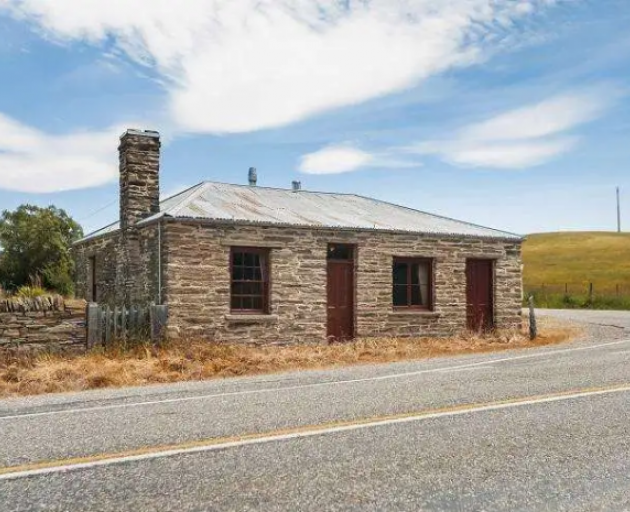
The dramatic landscape out to the Hawkdun Ranges shone in the award-winning film The Power of the Dog, although Colliers agent Helen Flintoff does not think the cottage itself featured, nor does she think there was a glimpse of British actor Benedict Cumberbatch in cowboy gear galloping past the cottage.
The scenery was definitely on display, though. The setting was supposed to be Montana in the United States but central Otago starred and the movie won New Zealand director Jane Campion an Oscar.
Enquiries about the cottage came from as far as Australia but someone who knows the area and knows the history of the cottage, built in 1897, bought it for under the $329,000 offers over price indication, Flintoff said.
The cottage, on a corner plot in Hills Creek Road, St Bathans, is said to have been built by the widow of the publican and was used as the post office and also offered services for travellers.
The vendors had embarked on a restoration project and did a lot of work but Flintoff said the level of interest was so high had the cottage been more up-to-date it would have fetched considerably more.
"It was my busiest listing by far in my career. I think a lot had to do with it being the same outlook that was used in the award-winning film that won an Oscar."
The cottage, which was sold in a multi-offer situation, was on the market for 57 days, had over 53,000 Facebook impressions and more than 110,000 on Google – that was huge numbers, she said.
The Hollywood touch really elevated the listing, Flintoff said, but when people came to look most felt there was too much work still to be done.
"If that work had been completed it would have sold for a much higher price and you would have seen more competition for it.
"It needed a septic solution put in and it needed its own power to be connected and it needed a bathroom."
Flintoff did not know what the new owner’s plans were, saying, "you could live in it but it would need money spent on it", but said the buyer loved old buildings.
She found it fascinating that many of those who came to look because of the movie had not actually seen the film, saying the idea of the film was enough to spark interest.
"It was quite staggering the number of people who hadn’t actually seen it."
Because of the big interest she is calling for anyone who has similar types of properties to sell, which are move-in ready, to get in touch with her.
"I have seen a real increase in people seeking those sorts of properties post-Covid to what it was pre-Covid. People are really looking for a lifestyle that they want."
As part of that, they wanted a property that had a rich history and told a story, she said.
Flintoff’s marketing for the cottage told how it had been featured by a variety of photographers and painters over the years.
"The cottage overlooks the Hawkdun Ranges creating panoramic framed views through the windows where part of an international film was filmed," she wrote.
While it had undergone some extensive renovation, it still had the charm and character of its original era.
There was a coal range and log burner, a partial kitchen, two double bedrooms "with all the feels of 1897" and many original features preserved.
The former owner told OneRoof in January she had bought the then run-down cottage in 2005 after driving past it often and thinking "that’s a property that needs saving".
The family won the tender with a bid of $60,000. At the time the cottage had a big hole in its side from being used as a garage for the local grader that ploughed the roads clear of winter snow.
The floor was gravel and the family added a long-drop toilet and completed other renovations, including putting in new concrete floors with underfloor insulation.
"When we bought the cottage it was in a state of ruin but we are incredibly proud of the work we have put into the place," the former owner said.
"The stone walls are nearly half a metre thick and when we dug out for the floor the foundation’s go down probably another 700 to 800 millimetres.
"It’s no wonder it is still standing. It’s still all the original beams, it’s amazing."










